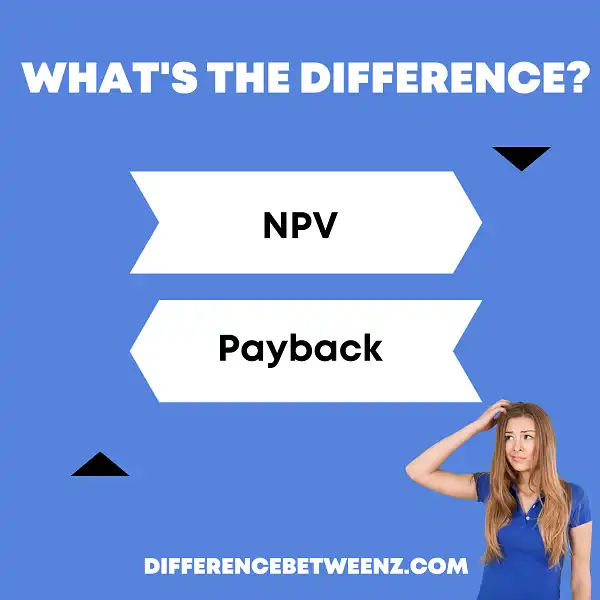There are many different measures of financial performance, and two of the most common are net present value (NPV) and payback. Both are important indicators, but they measure different aspects of a business’s financial health. NPV looks at how much cash flow a project will generate over its lifetime, while payback looks at how long it will take for a project to break even. Understanding the difference between these two measures is critical for making sound financial decisions.
What is NPV?
- NPV, or Net Present Value, is a financial calculation that businesses use to determine the profitability of a project. NPV takes into account the time value of money, meaning that it accounts for the fact that a dollar today is worth more than a dollar in the future.
- To calculate NPV, businesses first identify all of the cash inflows and outflows associated with a project. They then discount these cash flows using a discount rate, which reflects the opportunity cost of capital. The NPV of a project is equal to the sum of all discounted cash inflows minus the sum of all discounted cash outflows.
- If the NPV is positive, it means that the project is expected to be profitable. If the NPV is negative, it means that the project is expected to lose money. businesses always want to choose projects with a positive NPV. However, NPV is just one tool that businesses use to make decisions. Companies also consider other factors such as risk when making investment decisions.
What is Payback?
- Payback is a term used in business to describe the length of time it takes for an investment to generate enough revenue to cover its initial cost. Payback period is used as a method of evaluating potential investments and is often one of the key considerations when making investment decisions.
- The payback period is calculated by dividing the initial investment by the annual cash flow from the investment. For example, if an investment costs $1,000 and generates an annual cash flow of $200, payback period would be 5 years.
- Payback period is a simple and quick way to assess an investment, but it has some limitations. Payback period does not account for the time value of money or other factors such as risk. As a result, payback period should only be used as one tool in the decision-making process.
Difference between NPV and Payback
NPV and payback are two different methods of investment appraisal. NPV (net present value) takes into account the time value of money, whereas payback does not. NPV also considers all cash flows, both positive and negative, over the life of the investment. Payback only considers positive cash flows. NPV is generally considered to be a more sophisticated and accurate method of investment appraisal than payback, but payback can be useful in certain situations. For example, if an investor is only interested in short-term cash flow, or if the investment has a very short life, payback may be a more appropriate method of appraisal.
Conclusion
In short, NPV is a more accurate measure of the true value of a project, while payback is better at indicating when a particular investment will start to generate positive cash flow. Neither one is perfect, but understanding the difference between them can help you make wiser decisions about your business investments.


